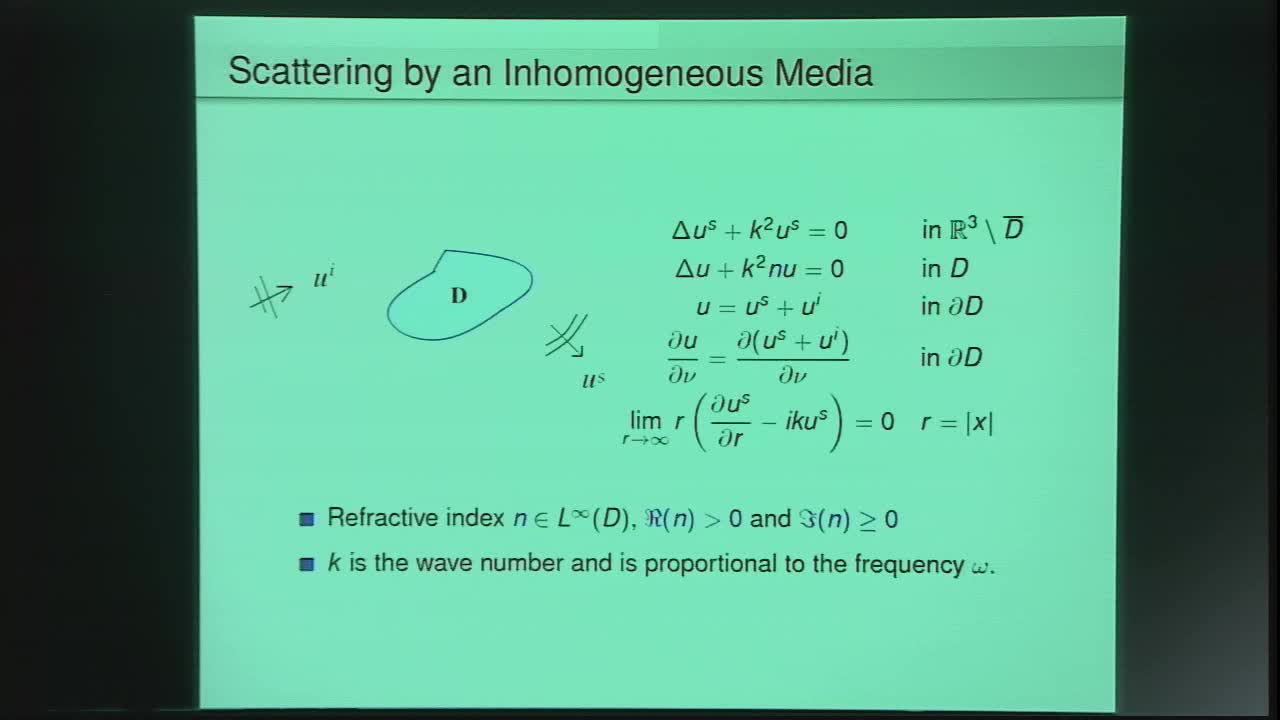Eigenvalues in Inverse Scattering Theory for Inhomogeneous Media
Presenter
February 13, 2017
Abstract
In the recent years there has been considerable interest in the transmission eigenvalue problem associated with the scattering by an inhomogneous media. Transmission eigenvalues are related to non-scattering frequencies, they can be determined from the scattering operator and carry information about the refractive index of the scattering medium (see F. Cakoni, D. Colton and H. Haddar, CBMS Series, SIAM Publications, 88 (2016)). However the use of transmission eigenvalues in nondestructive testing has two major drawbacks. The first drawback is that in general only first few transmission eigenvalues can be accurately determined from the measured data and the determination of these eigenvalue means that the frequency of the interrogating wave must be varied in a frequency range around these eigenvalues. In particular, multifrequency data must be used in an a priori determined frequency range. The second drawback is that only real transmission eigenvalues can be determined from the measured scattering data which means that transmission eigenvalues cannot be used for the nondestructive testing of inhomogeneous absorbing media.
In our presentation we first review the state of the art of the transmission eigenvalue problem and then provide a general framework on how to overcome the aforementioned issues by modifying the far field operator (or the scattering operator) which leads to new eigenvalue problems. The key idea is that, as oppose to transmission eigenvalues, the eigenvalue parameter in these problems is not related to interrogating frequencies. Nevertheless, these new eigenvalues (possibly complex) can still be determined form scattering data and hence can be used to determine changes in the refractive index of more general type of inhomogeneous media.
